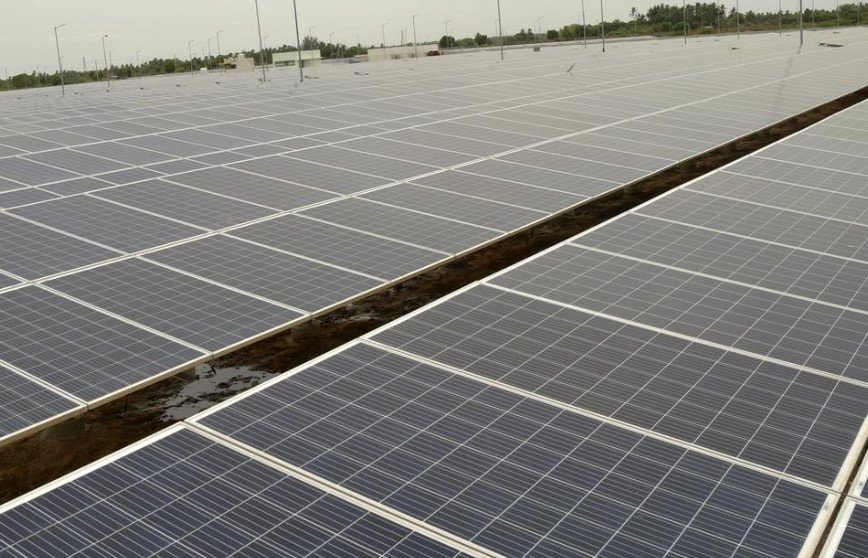Seven new clean energy projects signal Riyadh’s resolve to balance oil dominance with a greener future
Saudi Arabia is doubling down on renewable energy — and it’s not just about the environment. The Kingdom unveiled plans for seven massive solar and wind projects worth $8.3 billion, part of a sweeping strategy to diversify its economy, lower domestic oil use, and secure its long-term energy dominance. All this while sending a strong signal to global investors: Saudi Arabia is playing the long game, and it’s thinking bigger than barrels.
New Projects Backed by ACWA Power Add Firepower to the Transition
The Saudi government’s latest announcement wasn’t just another energy update — it was a statement of intent.
Led by the Kingdom’s flagship utility developer ACWA Power, the seven projects include a mix of solar farms and wind farms, strategically placed across the country to optimize grid reach and production capacity.
Each of these new developments is backed by private and public capital, bringing Riyadh’s clean energy ambitions closer to the ground.
This fresh investment adds muscle to a strategy that started seven years ago but is now picking up speed — fast.

Why It’s Not About Replacing Oil, But Reinforcing It
There’s a misconception floating around that Saudi Arabia is turning its back on oil. That’s not quite right.
What’s happening is a calculated shift: the Kingdom wants to free up more crude for export by powering homes and industries with renewables and gas instead. Burning oil domestically is seen as a waste of high-value exports, especially when oil prices are high and geopolitical tensions keep the market tight.
The plan, in essence:
-
Use cheaper and cleaner energy sources at home
-
Keep oil flowing to global buyers
-
Reinvest that export revenue in future-proof sectors like tech and tourism
So no, oil isn’t going anywhere. It’s just moving further away from Saudi living rooms and closer to international tankers.
2030 Target: Half the Kingdom’s Electricity from Renewables
This isn’t a vague promise. Riyadh is setting real targets — and 2030 is the deadline.
By the end of this decade, Saudi Arabia aims for 50% of its electricity to come from renewable sources. That’s a steep jump from the current levels, which still lean heavily on oil and natural gas.
Getting there will mean:
-
Scaling up solar installations, particularly in sun-rich central and western regions
-
Tapping wind potential in the north and northwest
-
Expanding natural gas usage as a transitional bridge
It’s aggressive. But then again, so is everything Vision 2030 touches.
Investors Are Watching — And They Like What They See
Saudi Arabia knows its global standing depends on more than oil. That’s why these energy shifts are designed not just to power cities but to attract capital.
And it’s working.
Institutional investors have shown rising interest in ACWA Power’s renewables portfolio, especially after the company signed deals with international firms in Europe and Southeast Asia. That’s partly why the Kingdom isn’t treating clean energy as a niche — it’s framing it as an investable growth sector.
One financial analyst in Dubai noted: “Saudi Arabia’s renewables strategy looks less like a climate gesture and more like a bet on energy economics — and that’s why it’s getting attention.”
Not Just for Home: Saudi Green Energy Eyes Overseas Markets
The Kingdom isn’t stopping at domestic reform.
Saudi companies are beginning to export clean energy technology and project management expertise abroad — particularly in countries looking to build solar infrastructure but lacking experience or scale.
Already, ACWA Power and other Saudi firms are involved in projects across:
-
Egypt
-
Uzbekistan
-
South Africa
-
Azerbaijan
There’s a play here: become a global renewables operator while still owning one of the most powerful oil portfolios on Earth.
Internal Stability, External Leverage
The benefits of this shift aren’t just technical — they’re strategic.
Using solar and gas instead of oil internally gives the Kingdom room to maneuver in global diplomacy. Fewer barrels burned at home means more for the international market, especially when supply squeezes occur.
At the same time, the clean energy buildout offers jobs, technology development, and infrastructure upgrades — all of which support the government’s goals for social and economic modernization under Crown Prince Mohammed bin Salman’s Vision 2030.
It’s a double-edged strategy: reduce reliance while doubling leverage.
Final Thought: A Long Game With Plenty of Fuel Left in the Tank
Saudi Arabia isn’t pivoting away from oil because it has to. It’s doing it because it wants to — and because it can afford to.
The renewable energy surge, symbolized by this latest $8.3 billion package, shows the Kingdom isn’t just reacting to climate pressure. It’s rewriting the script, positioning itself as both an oil titan and a clean energy contender.
That mix might just be the most powerful energy formula of the 21st century.
